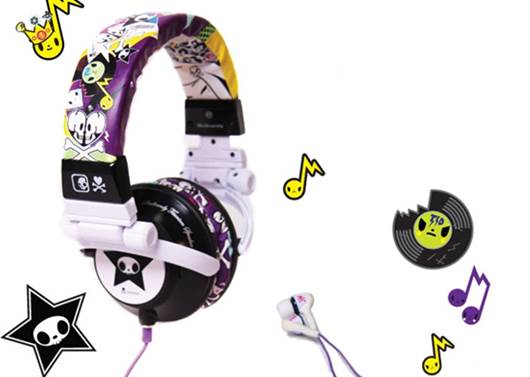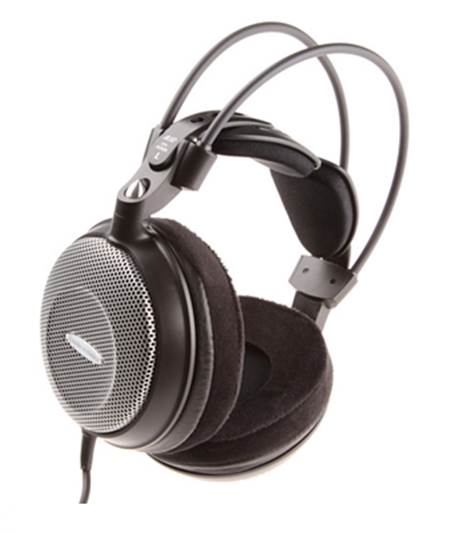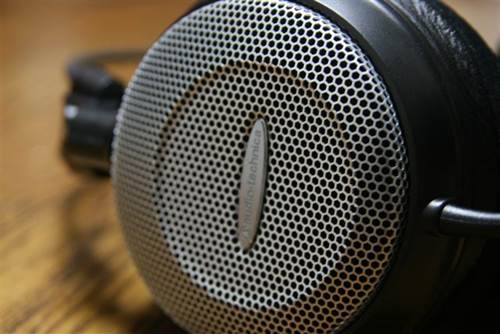Can compact portable headphones rival
the sound of larger hi-fi designs purposed for lounge listening?
Driven by the explosion in sales of
smartphones and tablets, headphones have been a growth area of late and this
has encouraged existing brands to introduce new products as well as encouraging
new manufacturers to enter the fray. If you’re looking for a pair of cans under
$225, then you have a wider choice of designs than there has ever been before…
The tablet market has driven a requirement
for over-ear designs that are still portable enough to be suitable for use on
the move. The result is a new type of headphone that promises good performance
at home or when you’re out and about. But can these smaller designs really
offer a performance that’s able to keep up with larger and more dedicated home
headphones?

We’ve
pitched two of these smaller ‘hybrid’ designs against four larger and more
home-oriented models
To find out, we’ve pitched two of these
smaller ‘hybrid’ designs against four larger and more home-oriented models.
These make use of features like open back earpads and considerably larger
drives that make them less fun to walk around with, but rather better to kick
back and listen to…
Of course, all to these designs are
sensitive enough to run from a portable device and all of them are fitted with
a 3.5mm jack to allow this (all are supplied with a quarter inch adaptor).
If you’re looking for a pair of cans for
under $225, you have a wider choice than ever before…
For the purposes of the test, the Sextet
were used in a decidedly 21st century testing setup. A laptop running Songbird
audio playback software capable of playing lossless and high resolution audio
was connected to Furutech’s sumptuous ADL Cruise headphone amplifier and all
listening was carried out and level matched on this compact rig. So, can humble
portables take the fight to the home headphone? Read to find out…
Audio Technica: ATH-AD500: $150
Big isn’t always beautiful with headphones,
but this has sizeable strengths…
Details
·
Origin: Jan/China
·
Type: open-back
·
Weight: 260g
·
Features: 53mm drives
·
‘Wing Support’ headband
·
3.5mm adaptor
·
Distributor: Audio Technica
·
Website: eu.audio-technica.com
This is one of the more affordable members
of the company’s open-backed range, but this won’t be immediately apparent when
you unbox them. The silver finish on the back of the earpad is a bit sudden and
hinge in a sort of spike is a little curious, but overall fit and finish is
very good.
Another nice touch is the use of the
company’s trademark ‘wing’ mount. Instead of a conventional headband, the
ATH-AD500 has a pair of wire hoops that give the necessary structure with a
pair of independently sprung pads that are fitted below. These form the contact
point to your head and mean you could have a head like Sloth from The Goonies
movie and still get a good fit.
The ATH-AD500 deploys a pair of 53mm
drivers with neodymium magnets. This is a reasonably large driver by the
standards of the test and should serve up reasonable bass extension. The large
earpad means that the driver is set a good distance from the ear and in use I
found the headphone easy to wear, although of all the designs here this is
probably the one least suited to moving around with. As an open-backed design,
noise leakage is understandably high.

ATH-AD500
has a pair of wire hoops that give the necessary structure with a pair of
independently sprung pads
Sound quality
The Audio Technica proved to be reasonably
sensitive and didn’t require a huge amount of power to reach the listening test
level. Having done so, the first impression was that the top end detail is
extremely good, almost to point of being slightly bright with the rough and ready
Kings of Leon recording, but the overall presentation is open and airy, aided
by the open-back design and space between ear and driver.
The rather more artfully recorded Martha
Tilston piece moved the Audio-Technica’s top end to a more refined setting.
This is a very open and engaging performer that manages to make voices and
instruments sound both real and extremely engaging. Tilston’s vocals are
captured with a fantastic sense of energy and are clearly defined from the
supporting instruments.
Of all the designs here, it has a great
sense of the performance, and there’s an impressive feel for the soundstage
that the recording has. The sculpted instrumentals of Stuart McCallum sound
larger and more cohesive than they do on most of the other designs in the test.
The sense of decay from instruments and their relationship to one another is
also especially impressive.
Where the ATH-AD500 is undermined slightly
is in the bass response. The low end is not necessarily limited – there is
plenty of energy to the Hybrid recording, but it is never completely consistent
and can seem a little languid in terms of timing. This never tips over to the
ATH-AD500 sounding sluggish, but the Grado and Sennheiser in particular, are
capable of providing more spark and attack with this piece.
Overall however, this is a very likeable
headphone with a number of highly appealing features. It is comfortable,
sensitive and easy to use for long periods of time, and if your musical choices
tend toward acoustic or orchestral pieces, then it’s worth seeking out over
many of the others here. A most impressive product at the price, then.

Where
the ATH-AD500 is undermined slightly is in the bass response
On test
As the second most sensitive headphone in
this group, the Audio Technica ATH-AD500 gives plenty of output for modest
signal voltage. It also provided good capsule matching for a headphone, with  5.5 dB error from 40Hz to 10 kHz. Bass extension is nothing to
write home about, though, with -6dB ref 200Hz arriving at a high-ish 50Hz. Impedance
variation of 63.1 to 86.3 ohms over the audible frequency range gives rise to
just 0.33dB response error, although this will increase for source resistances
higher than 10 ohms. At 342g, the AD500 is one of the heavier and larger models
here. Diffuse-field corrected frequency response suggests that the perceived
tonal balance with be flat below 1kHz before the bass roll-off, but that the
presence band is suppressed, so the sound may appear to lack vibrancy and
detail in comparison with others in the group.
5.5 dB error from 40Hz to 10 kHz. Bass extension is nothing to
write home about, though, with -6dB ref 200Hz arriving at a high-ish 50Hz. Impedance
variation of 63.1 to 86.3 ohms over the audible frequency range gives rise to
just 0.33dB response error, although this will increase for source resistances
higher than 10 ohms. At 342g, the AD500 is one of the heavier and larger models
here. Diffuse-field corrected frequency response suggests that the perceived
tonal balance with be flat below 1kHz before the bass roll-off, but that the
presence band is suppressed, so the sound may appear to lack vibrancy and
detail in comparison with others in the group.
|
Results at a
glance
§ Sensitivity:
+12%
§ Impedance
variation: +16%
§ Capsule
matching: +5%
§ LF
extension: -19%
§ Weight:
+15%
Our verdict
§ Sound
quality: 4/5
§ Value
money: 4.5/5
§ Build
quality: 4.5/5
§ Sensitivity:
4.5/5
§ Like:
Comfortable, well built with excellent soundstage and tonality
§ Dislike:
Bass response rather restrained
§ We
say: A clever and well thought out design that has some excellent sonic
traits, but can sound a tad relaxed
§ Overall:
4.5/5
|